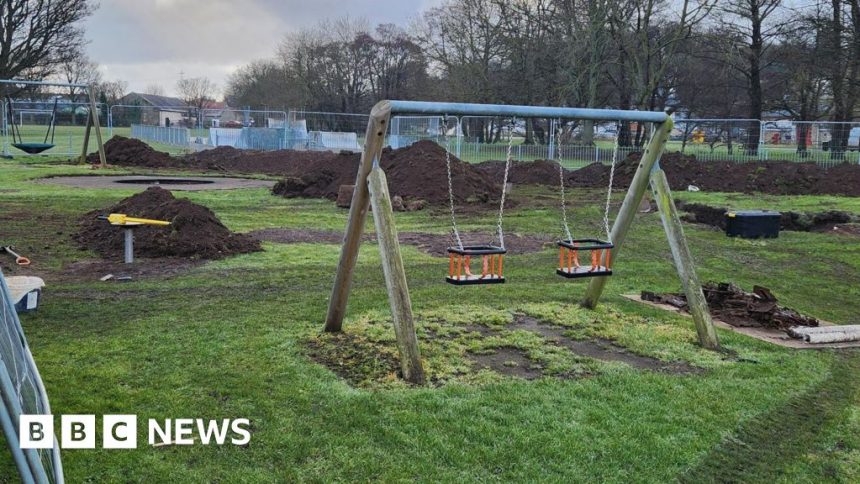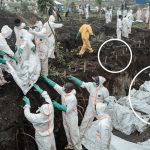More WW2 bombs found under children’s playpark
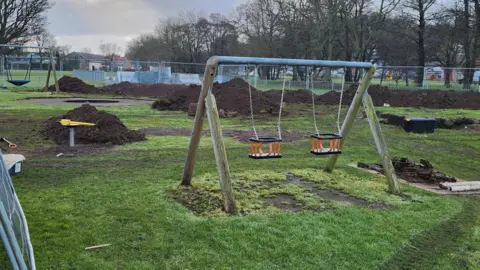 Mark Mather
Mark MatherA total of 176 World War Two bombs have now been discovered under a children’s playpark and it is feared more will be unearthed.
The first of the practice devices, which still contain a charge, was discovered in Wooler, Northumberland, in January and was followed by much larger finds.
It is believed the area was used as a Home Guard training ground and the ordnance was buried at the end of the war.
Conservative councillor Mark Mather said: “I never thought as a parish councillor I’d be dealing with bomb disposal.”
In December, Wooler Parish Council secured a grant to build a £150,000 fully inclusive playpark to be added to the existing play area in Scotts Park.
But on 14 January staff found the first suspicious object while digging foundations.
Mather said: “It’s quite something to think the children have been playing on bombs and it’s been a really challenging situation.
“We’ve only cleared about a third of all the park and we could still find another pit with more bombs in.”
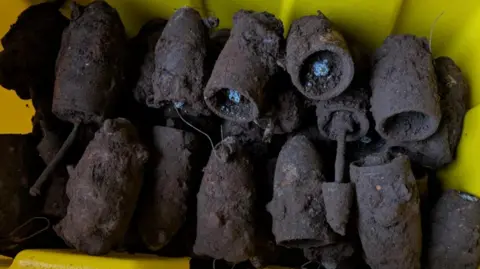 Mark Mather
Mark MatherExperts from Catterick Barracks confirmed the first device was a training bomb.
The next day another device was found and the Ministry of Defence (MoD) said a full site survey was needed.
Specialist contractor Brimstone Site Investigations was appointed, initially for a two-day survey, and immediately found a further 65 bombs, each weighing 10lbs (4.5kgs).
The pit was extended and 90 more bombs were found on the second day.
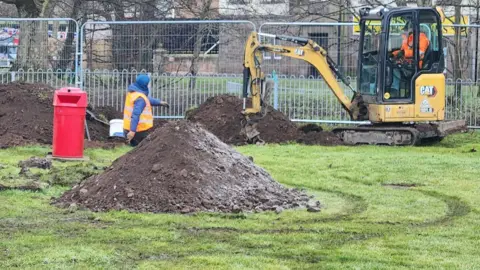 Mark Mather
Mark Mather“They are called practice bombs so they’re not live,” Mather said, “but they do still carry a charge and were found with the fuse and contents intact so they could be hazardous.
“The story we’re getting from locals is that Wooler was a centre for Home Guard training and officers came here from all over the country.
“After the war it looked like they just buried all the ordnance in one of the pits.”
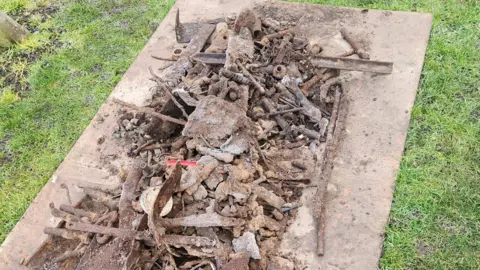 Mark Mather
Mark MatherIt is anticipated work will continue until at least the middle of February and Mather said it was not clear initially who would pay for it.
“The Army will not support us in any way, either looking for the ordnance or removing it, which has been extremely disappointing,” he said.
“We thought it would bankrupt the parish council but the county council has agreed to cover the cost, so at least we won’t lose the park.”
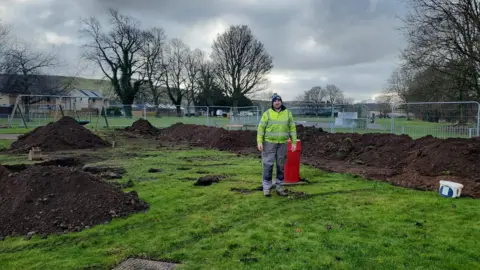
The MoD was asked about the parish council’s claims and the ministry’s involvement, but would only confirm a team attended the site twice in January.
A Northumberland County Council spokesperson said: “Clearly this find was unexpected, but we are pleased to have been able to find the extra funding to allow this crucial work to be done safely.”



